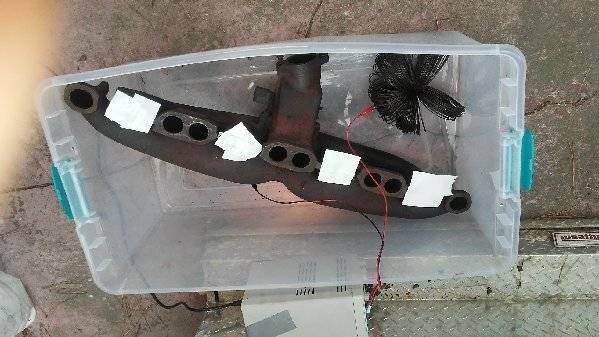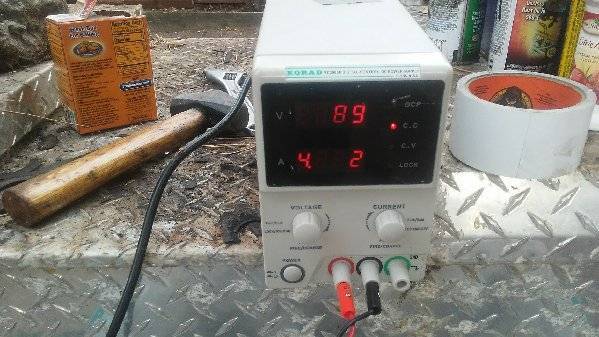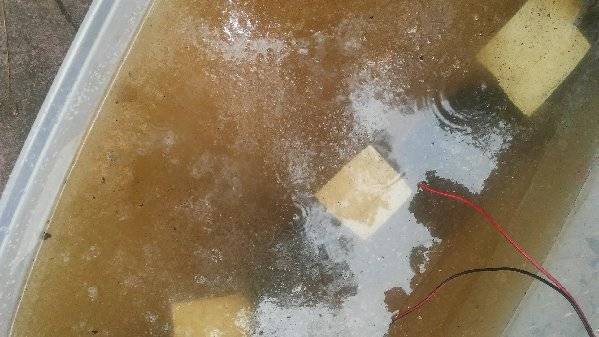|
Re: In-Car Rebuild
|
||||
|---|---|---|---|---|
|
Home away from home
|
Expanding on your original question:
It says in the Packard 1948-54 shop manual that you can pull the pistons out through the top, it also says this in the 1955 Motors manual I have. The prewar Super-8 engine was a different design, from what i understand. I have a Motors manual from 1948 (the bookseller shipped me the wrong one and said "keep it") and it says for those engines (and the V-12) the procedure would be to push the pistons up enough to get the piston pin out, remove the piston through the top, and the rod from below, it also says "best done warm".
Posted on: 2020/8/26 13:43
|
|||
|
||||
|
Re: In-Car Rebuild
|
||||
|---|---|---|---|---|
|
Forum Ambassador

|
Engines that require the piston to be removed from the top and the connecting rod from below are those where the big end of the rod is larger than the cylinder bore, as in the prewar 320 cubic inch Eight/Super Eight.
Posted on: 2020/8/26 13:57
|
|||
|
||||
|
Re: In-Car Rebuild
|
||||
|---|---|---|---|---|
|
Just can't stay away
|
I did attempt to do an in car rebuild on my 50 and made a bunch of mistakes. The big one was when I put the engine back together and filled the radiator I got water in the cylinders. No where did I find information that when you put the head gasket back on you put sealer on both sides of the head gasket and seal around the studs that pass through the water jacket. You can see the ugly photos in my blog.
packardinfo.com/xoops/html/modules/newbb ... lat&order=ASC&type=&mode=0&start=10 It should have worked if I had only known.... Mark
Posted on: 2020/8/27 11:37
|
|||
|
||||
|
Re: In-Car Rebuild
|
||||
|---|---|---|---|---|
|
Home away from home
|
PROGRESS (?!?) Update.
Well, I made some progress, but I am a little stuck. When I was trying to remove the manifolds one of the exhaust manifold studs broke off, and it took a friend with his torch and a lot of "English" to remove it with an easy-out, but I succeeded in that. Win #1. The broken bolt in the oil pan turned out to be a BROKEN TAP, presumably left there by a previous mechanic. It took me a long time to figure out how to get that out, but I finally succeeded, the magic was a 3/32" diamond-tipped hole saw (made by Milwaukee) that you can buy at Home Depot. I actually also bought a small diamond-tipped hole saw for my Dremel, which I used to remove the small pieces that sometimes got stuck inside the hole of the Milwaukee tool. I was able to save the threads as well, which is a bonus. Miracle of miracles. Win #2 I took off the transmission oil-cooler. It had a strange piece of rubber inserted (apparently on-purpose, it was definitely a piece of rubber cut for this purpose) into the intake side of the cooler. The cooler otherwise looked to be in good condition. I have no idea why this was done except perhaps a mechanic was trying to get the engine to run hotter for some reason? I never had problems with the car running hot, so this is mystery. Win/loss still TBD. The head gasket came off in one piece in good condition. Might even re-use it if I decide I need a temporary one for a test. Win #3. I had a 5 amp 30V DC power supply laying around and was able to use it to remove 90% of the rust from the manifold assembly. The exhaust port manifold surface doesn't look to great, but that can be re-surfaced I presume. I have left the manifold assembly bolted together as I have no need to disassemble it (some previous mechanic had disabled the heat riser valve and fixed it in the open condition, which is what I have read to be the prudent thing), and I would think the machine shop would prefer that configuration for re-surfacing, in order to make the intake port surface line up as well. Win #4. I was able to remove all the valves and cleaned all the carbon and stuff off the valve area. I used a combination of a Valve Compressor I was able to purchase from Speedway for not too much $$ and another old-style one for the hard-to-reach exhaust valve for the #8 cylinder (also useful for the very middle 2 valves, though I could probably have gotten them out with the big tool if I had taken out the heater fan assembly). Win#4. The intake valve seats all look pretty good, but many of the exhaust valve seats are pitted. I haven't examined all the valves individually, but I have put each valve assembly (valve, spring, keepers, spring top and bottom, lifter assembly) in their own individual labeled zip-lock bag. I plan to take these to a machinist to get each valve re-surfaced if need be, and the hydraulic lifters and springs cleaned and tested. I bought an extra hydraulic lifter from Kanter for comparison purposes, the machinist says he has a leak-down tester for lifters. Win/loss still TBD. I was able to use a ridge-reamer to get all the cylinder ridges removed. Never done that before, that wasn't as hard as I thought. Win #5 Inspecting the cylinders, I am going to get some better measurements, but Cylinder #8 was less than 0.005" oversize, but only about 0.001" out-of-round and a similar amount of taper. So maybe salvageable. Win/loss still TBD. I did some initial investigation of the valve guides, and it seems like the intake valve guides are o.k. but I may want to replace the exhaust valve guides. I bought a new valve guide and a couple brand-new valves (intake and exhaust) and compared the fit of "new-new" to those in the car. Win/loss still TBD. I was able to get the little gauge-block for checking lifter clearance from Pacific Northwest Packards, thanks everyone for the guidance there. Win #6 Cylinder #2 is the problem, because it has a significant scoring mark. Maybe that can be honed out. I was going to try to take the pistons out to inspect them and at a minimum put new rings on them, but I have run into a problem - though the manual says one can take the pistons out from the top by easing them out by "using the handle of wooden hammer" on their undersides, I cannot figure out how to get to the bottom of pistons #1 and #2 to push them out, especially cylinder #2, as the cross-member is in the way. I am loathe to start the process of piston removal if I cannot get them out. But I may have already screwed up here because of doing the ridge removal on those two cylinders. Win/loss - heading towards a loss here. So my questions: (1) I cannot seem to figure out how to get cylinder #1 and #2 pistons out with the engine in the car. At a minimum, even if I do end up taking the block to a shop, I would like to do as much of the disassembly myself, in order to (a) economize labor, (b) learn, and (c) evaluate, and (d) minimize the weight of the assembly if I do end up taking it out. Up till now, at least, the car itself has functioned as a not-too-terribly inconvenient engine stand. (2) If I can get past #1, the specs say that the valve seat angles are 30 and 45 degrees (intake and exhaust). The valve seats themselves are cast into what looks like raised sections, so in most cases I don't see how a "3-angle" valve job would work - any comments there? Should one just use a 30/45 degree tool to clean up the valve seats? (3 & 4) If I do end up replacing valve guides, is it possible to do cylinder #8 valve guide in the car? I was thinking of purchasing the following valve guide driver. Would that work? cylinderheadsupply.com/kl1765.html If I am able to get the pistons out, I intend to hone the cylinders to see if I can improve the situation, especially on cylinder #2, then do some better measurements to see where I am at. Other things on the list: (a) Remove the water-distribution header from the block and clean. (b) Get all the carbon out of the cylinder head, and then use electrolysis on it to get the rust out of the water passages. (c) Remove/Replace all the welch-plugs on the block, and use that opportunity to clean some of the rust out of the coolant passages. (d) Borrow a vibration dampener puller, and remove the timing cover to at a minimum replace the gasket, but also evaluate the timing chain/gear. (e) I have looked at the cam from below, it doesn't show signs of excessive wear, but I would also say that I don't know what that would look like. I'll take some pictures of the camshaft and post that next. (f) New rod and main bearings, perhaps a new rear main seal, using the "Sneaky Pete" method. (g) Rebuilt oil pump. (h) New distributor bushings. Thanks everyone in advance for your interest and advice. Attach file:  (272.57 KB) (272.57 KB)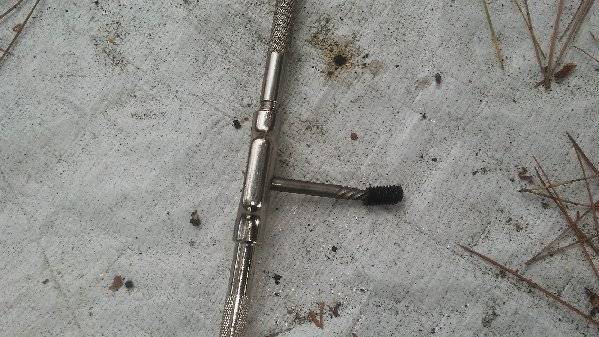  (270.71 KB) (270.71 KB)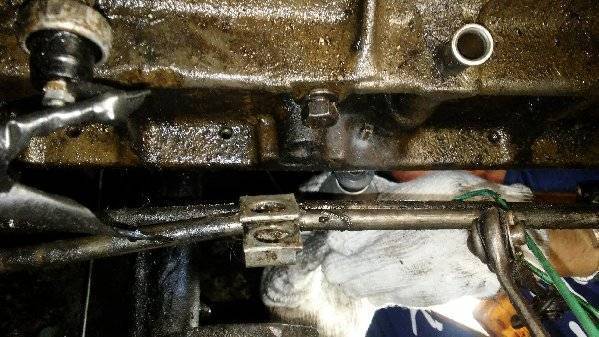  (273.38 KB) (273.38 KB)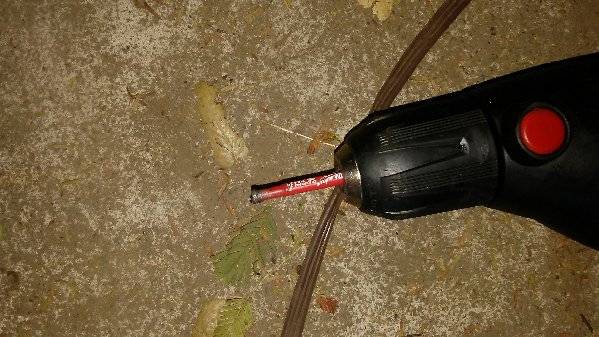  (239.41 KB) (239.41 KB)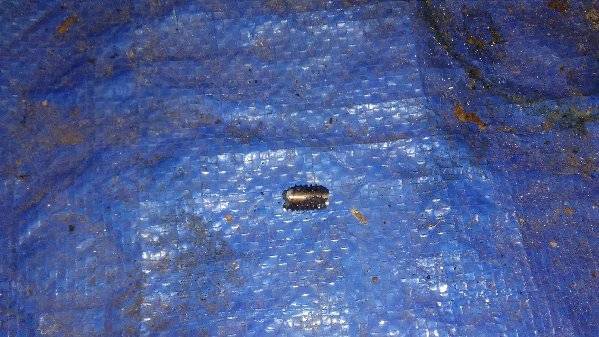  (191.50 KB) (191.50 KB)  (161.09 KB) (161.09 KB)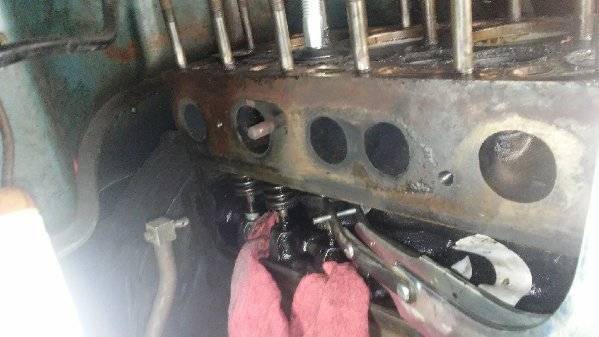  (168.07 KB) (168.07 KB)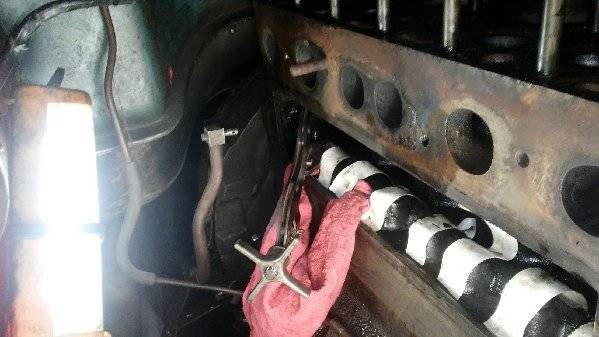  (241.22 KB) (241.22 KB)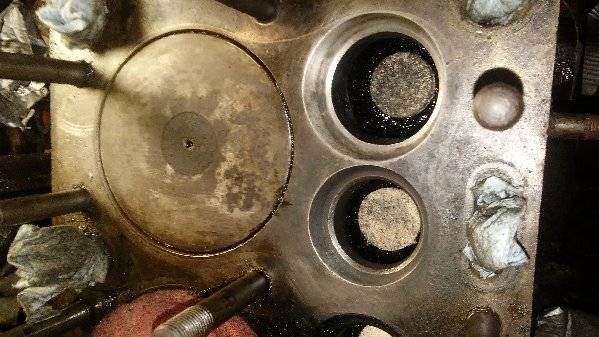  (178.57 KB) (178.57 KB)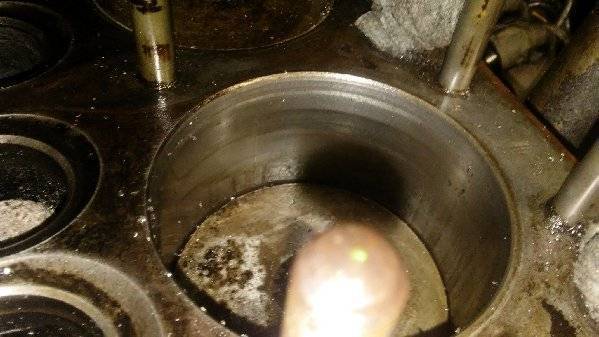  (278.08 KB) (278.08 KB)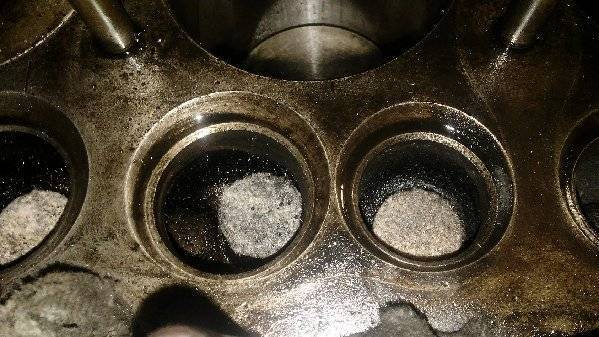  (153.09 KB) (153.09 KB)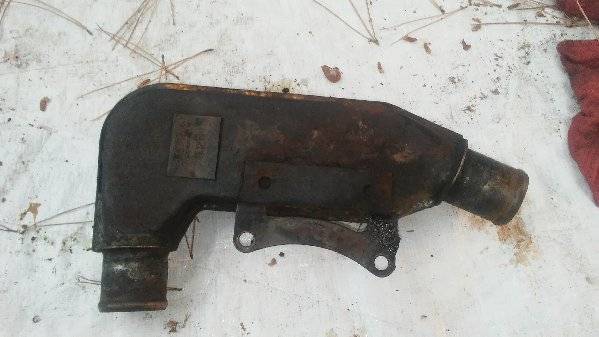  (154.74 KB) (154.74 KB)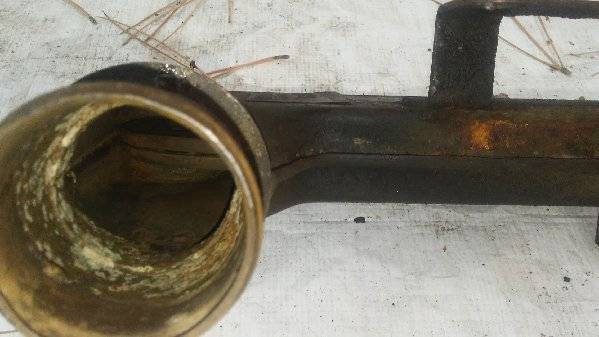  (206.89 KB) (206.89 KB)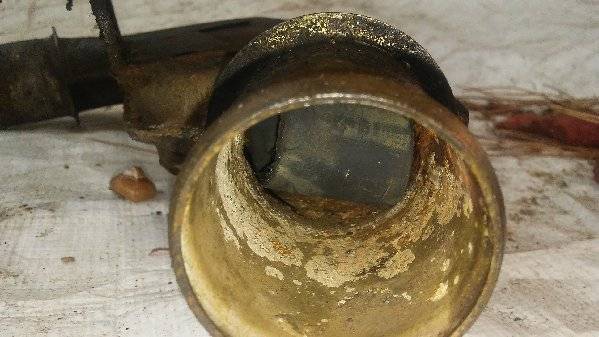  (220.80 KB) (220.80 KB)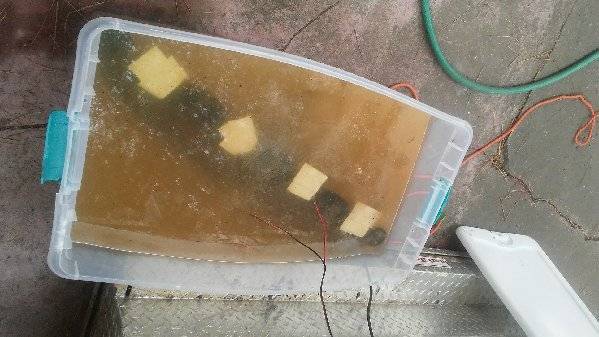  (217.64 KB) (217.64 KB)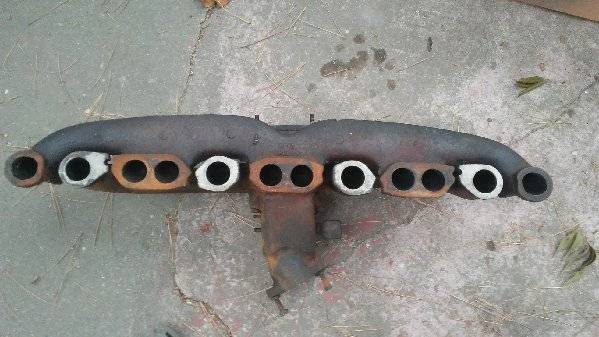
Posted on: 2020/9/29 0:27
|
|||
|
||||
|
Re: In-Car Rebuild
|
||||
|---|---|---|---|---|
|
Home away from home
|
Cutting the ridge out of the cylinder did no harm. You need to do that anyway to remove the pistons and also if you are going to install new rings.
I'd be interested in hearing and seeing more of you electrolysis rust removal. John
Posted on: 2020/9/29 8:09
|
|||
|
||||
|
Re: In-Car Rebuild
|
||||
|---|---|---|---|---|
|
Home away from home
|
The exhaust/intake manifold assembly was very rusty. I had this DC power supply I had bought off of ebay used a while back, but there are a lot of them out there for not much $$. Mine can do 30 Volts and 5 amps, I ended up using about 20 volts and a touch less than 5 amps.
I bought a container that was large enough to fit the exhaust manifold. I dumped a whole box of Arm and Hammer baking soda in. Baking soda is supposedly not quite as good as washing soda, but it was at hand. Stirred it around a bunch. That turned out to be a little more than I actually needed, because I couldn't get all of it to dissolve, but that was no big loss. I used a coil of bailing wire as the sacrificial anode. I cleaned up the manifold to get as much grease off as possible, put the manifold in, and hooked up the NEGATIVE terminal to the manifold, and the positive terminal to the coil of bailing wire. Then I turned on the power supply and set it to current control aiming for a bit under 5 amps (not wanting to stress out the power supply too much), and let it go. Soon you go got a nice soupy concoction of rusty water, with a lot of bubbles. You don't want to cover the top, because the bubbles are hydrogen escaping. Do this outside. I let it run for probably 3 hours or so total, maybe a bit longer. Just watch it. There is no harm in running long, it only eats the rust not the metal. I covered the machined surfaces out of paranoia, but they were not touched at all, even in the places where the cover (duct tape) came off. After the part comes out it will want to start re-rusting, and get a little coat of light orange rust, unless you spray it with WD-40 or something. Or just put it back in the bath for a bit when you are ready to paint it. The nice thing is the "bath" is re-usable, the soda doesn't get used up. So you can put something else in it next. You could even do many small parts at once if you hook up the negative lead in parallel using alligator clips which are easily purchased at a hardware store.
Posted on: 2020/9/29 10:00
|
|||
|
||||
|
Re: In-Car Rebuild
|
||||
|---|---|---|---|---|
|
Home away from home
|
That is nice. I know I tried the molasses treatment that was suggested on another site but didn't seem to get much results from it.
If you are going to push the pistons up through the top, you might want to slip a piece of rubber hose over the threads on the rod after removing the cap. This helps protect the possibility of scratching the rod journal on the crank.
Posted on: 2020/9/29 10:45
|
|||
|
||||
|
Re: In-Car Rebuild
|
||||
|---|---|---|---|---|
|
Home away from home
|
Thank you for the tip about the piece of rubber tubing. I bought some oak dowels of a few different diameters today, I'll see if I can use those sometime this evening.
Posted on: 2020/9/29 18:27
|
|||
|
||||
|
Re: In-Car Rebuild
|
||||
|---|---|---|---|---|
|
Home away from home

|
I hope this question is not construed as high jacking the post I'm sorry if it is. I find the use of a 12V power supply Very interesting. You say it will only remove the rust from the manifolds not the metal. Can this 12 volt setup remove the rust from anything in the fluid such as tools?
Posted on: 2020/9/30 12:22
|
|||
|
Steve
Old cars are my passion  1951 Packard 200 1953 Packard Clipper Custom Touring Sedan 1955 Dodge Custom Royal Lancer Tri-tone 1966 Rambler Classic 770 Convertible |
||||
|
||||

